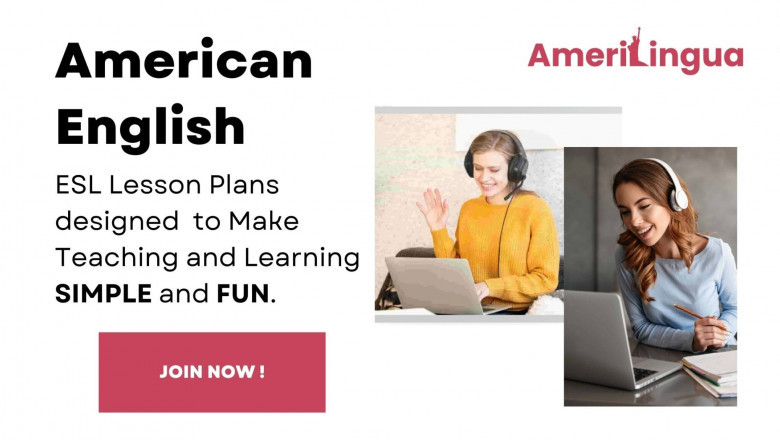views
Teaching English as a Second Language (ESL) is as rewarding as it is challenging. One of the most critical components of a successful ESL classroom is a well-structured lesson plan. Whether you’re teaching online or in-person, to children or adults, creating engaging, adaptable, and purposeful lessons is key to student success.
But what makes an ESL lesson plan truly effective? And how can you create lessons that not only meet language objectives but also keep learners motivated and involved?
In this article, I’ll share practical tips, personal insights, and strategies that have helped me create better classroom experiences—and why finding the right ESL lesson plans can make all the difference.
—
Why Lesson Planning Matters More Than You Think
When I first started teaching ESL, I underestimated the power of planning. I thought flexibility and spontaneity were all I needed. But I quickly realized that a thoughtful, structured lesson plan doesn’t restrict creativity—it actually enables it.
A solid lesson plan helps you:
-
Set clear learning goals
-
Manage class time effectively
-
Incorporate diverse teaching strategies
-
Adapt lessons to different proficiency levels
-
Build student confidence and reduce anxiety
Lesson planning doesn’t just benefit students—it gives you peace of mind and sets you up for success.
—
What Should an Effective ESL Lesson Plan Include?
A typical ESL lesson plan isn’t just a checklist—it’s a roadmap. Here are the key components I include in every plan:
-
Learning Objectives
What should your students be able to do by the end of the lesson? Be specific. For example, “Students will be able to introduce themselves using basic personal information” is more useful than “Students will learn introductions.” -
Warm-Up Activity
Start with something fun and simple to get everyone speaking right away. Icebreakers, short games, or even a question of the day can work wonders. -
Core Vocabulary and Grammar
Introduce new language concepts clearly and in context. Flashcards, visual aids, and real-life examples help make abstract grammar rules more concrete. -
Practice Activities
I like to vary activities to suit different learning styles—listening exercises, pair work, role-plays, or games. Repetition with variety is the secret sauce. -
Real-Life Application
Students are more engaged when they understand why they’re learning something. Always link the language to real-life use—whether it’s ordering food, having a job interview, or writing an email. -
Wrap-Up and Review
End the lesson with a quick review. Ask students what they learned, or have them use the day’s language target in a short speaking or writing task.
—
Tips for Making Lesson Plans More Engaging
Let’s be honest—some ESL materials can feel dry or outdated. Here’s what I do to bring lessons to life:
-
Use authentic materials: Bring in menus, brochures, or real video clips to help students connect language to the real world.
-
Gamify it: Turn grammar drills into fun team competitions or quizzes.
-
Personalize topics: Ask students about their hobbies, hometowns, or goals and tailor lessons to reflect their interests.
-
Keep it interactive: Even the best lecture won’t beat a group activity in terms of student participation and retention.
—
Where to Find Reliable ESL Lesson Plans
You don’t have to reinvent the wheel every time. There are excellent resources available online that provide complete, ready-to-use lesson plans designed by experienced educators. If you're short on time or looking for inspiration, using professionally created esl lesson plans can be a game-changer. Look for ones that align with your teaching style and student needs.
—
Final Thoughts: Plan with Purpose, Teach with Heart
If there’s one thing I’ve learned, it’s that the best lessons are the ones that resonate. A great ESL lesson plan is more than just structure—it’s the foundation that lets creativity, connection, and confidence grow.
So whether you're a new teacher building your first set of materials or a seasoned pro looking to refresh your approach, keep planning with purpose. Your students will thank you.
And remember—your best resource is your passion. The right tools and a thoughtful plan simply help you channel it in ways that make a lasting impact.














Comments
0 comment